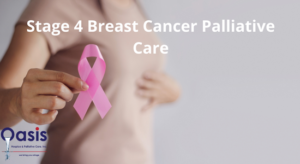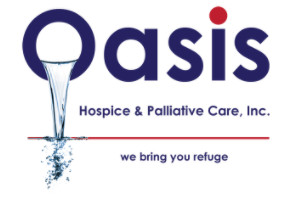Stage 4 breast cancer, often known as advanced breast cancer, is when cancer has spread to other parts of the body. This indicates that it has spread from the breast to one or more other body parts. To put it another way, cancer cells have broken out from the initial tumor, migrated through the circulation, and are now multiplying elsewhere. What is stage 4 cancer palliative care?

The following are some of the most common sites of breast cancer metastases:
- bones
- brain
- liver
- lungs
- lymph nodes are nodes in the lymphatic system.
The symptoms of stage 4 breast cancer differ depending on the extent of the cancer’s spread. However, it’s fairly uncommon for someone to have symptoms such as:
- the ache in the chest wall
- constipation
- Breathing problems
- edema in the extremities
- There is no cure for stage 4 breast cancer at this time. However, there are various solutions available to improve the quality of life and lengthen life in many circumstances. Palliative and hospice care are examples of such possibilities.
- There are many misconceptions about these sorts of care. Here’s what you should know to get a better understanding of your alternatives.
Palliative care: An Overview
Palliative care is the treatment of cancer’s unpleasant symptoms, both physical and emotional. The following are some examples of palliative care:
- Over-the-counter (OTC) and prescription painkillers are examples of traditional pain treatments.
- Massage, acupressure, and acupuncture are examples of nonmedical pain management techniques.
- loved ones provide social and emotional support
- community organisations, internet forums, and email groups provide further support
- Support for overall health and wellness, as well as nutrition and exercise
- Religious, spiritual, meditative, or prayer activities are all examples of religious, spiritual, meditative, or prayer activities.
- Palliative care aims to improve a person’s quality of life rather than cure or treat cancer. It can be used alone or in combination with other cancer treatments.
When Is Palliative Care Necessary
Palliative care should always be considered from the moment a patient is diagnosed with a terminal illness. Though palliative care can and should be used in conjunction with end-of-life care, it is not utilized primarily in certain cases. It can be taken in conjunction with any prescribed cancer-specific therapy. It can also aid in the treatment of any unpleasant side effects associated with cancer treatment. You can contact oasis hospice which offers the best care for hospice cancer.
What Is Palliative Care And How Does It Help
Palliative care aims to help people live their lives to the fullest. Palliative care improves the quality of life as cancer treatment strives to extend it. Palliative care’s physical and mental assistance can be a great source of consolation during a difficult time.
Hospice Care: What You Need to Know
Hospice is a type of end-of-life care for people who have a terminal illness and either don’t have any treatment alternatives or don’t want to prolong their lives with conventional methods. This type of care entails the use of drugs and other treatments to manage symptoms, and side effects, and to keep a person as comfortable as possible throughout their final days. Hospice care can be provided in a variety of locations, including:
- one’s own residence
- a medical facility
- a facility for the elderly
- a hospice center
When Is Hospice Care Necessary
It’s a difficult choice, but the sooner hospice care begins, the more benefits a person will receive. It’s critical not to put off receiving hospice care until it’s too late. Hospice caregivers can build a better-tailored plan of care when they have more time to get to know a person and their specific situation.
How Hospice Care Can Assist You
Hospice care aids in the transition from actively treating cancer to focusing on remaining as comfortable as possible and planning for death. When no other treatment options are available, knowing that experienced hospice workers will be there to make their final days more comfortable can be a huge relief.
Hospice care is also beneficial to family members because they are relieved of the burden of end-of-life care for their loved ones. Knowing that a loved one isn’t in pain might make this difficult time easier to bear for family and friends.
Choosing Between The Two Options
It can be difficult to choose between palliative and hospice care, as well as whether to use these choices at all. Here’s how to figure out which is the best option for you or a loved one.
Self-Examination Questions
When deciding on the appropriate treatment for your current condition, ask yourself the following questions:
What Stage of Cancer Am I In
Palliative care is suitable at any stage after a diagnosis of metastatic breast cancer. When a doctor says they only have six months or less to live, most individuals choose hospice care. You can use the timing to assist you to decide which technique is preferable.
Is It Time For Me To Quit Taking These Medications?
Palliative care is concerned with making a person as comfortable as possible. They may still be given therapies to reduce tumors or slow cancer cell proliferation. Hospice care, on the other hand, usually entails the cessation of anticancer therapy. It is only concerned with your comfort and the completion of your life on your own terms. It may take some time to realize that your therapy and life have come to an end. If you aren’t ready yet, palliative care may be the best option.
Where Do I Want To Be Cared For
Palliative care programs are frequently offered at a hospital or short-term care facility, such as an extended-care facility, however, this isn’t always the case. Hospice care is usually provided as much as possible in the patient’s own home.
Oasis Hospice is the best hospice care for cancer. If your loved ones are suffering from brain tumors then read our guide on brain tumor hospice. For further information, you can call (708) 564-4838.

